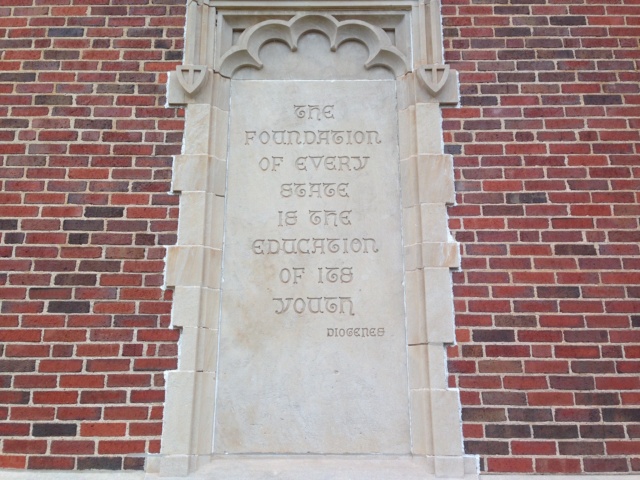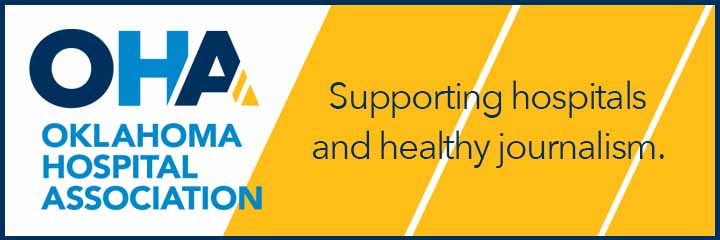
I have been dreading this post.
I had hoped to sidestep the questions raised by Tim Willert’s article Monday regarding the criticism OKCPS principals and vice principals have aimed at district leadership. Willert cited charges by principals that I had hoped to avoid, but his article also described issues that clearly merit more discussion. So, I am timidly tackling this controversy with the hope that I can contribute constructively and not complicate matters.
Willert reported that 113 principals and assistant principals signed a letter, stating, in part:
Our collective lack of confidence in the district’s direction results, in significant part, from the culture that the administration has created over the last two years.
I have nothing to contribute to the question of whether the current administration has made things worse, but I can wholeheartedly concur with the letter that, over the decades, “The district has created an environment that undermines the morale of the school administrators and is detrimental to the morale and welfare of the organization.”
I can also say that this is just the latest example of why American Federation of Teachers President Ed Allen was correct in pushing a major initiative for hiring the Kotter International consulting firm to guide the transformation of the OKCPS’s “dysfunctional” culture.
I’m equally pleased that Superintendent Aurora Lora has been a collaborative partner. In a Dec. 6 Oklahoman article, Lora was reported to have released a statement the preceding Friday, which included:
We were honored to have access to an expert like Dr. John Kotter. The time with him only solidified the district’s commitment to working collaboratively with the union and other partners to make OKCPS a place where every employee feels valued and has the tools [to] be successful.
At the same time, I’m supportive of the principals’ call to abandon “district created benchmarks” that “do not prepare students for success on, or align to, state assessments.” And I also understand their anger in regard to Title I expenditures. I would merely like to add some historical context.
Benchmark testing could have worked
Perhaps the only education policy that was dumber than mandates that required teaching to the primitive bubble-in tests is the resulting approach of teaching to even more dubious benchmark assessments as a way to boost high-stakes test scores. Even in the 1990s there was a push to align and pace instruction in order to cover state academic standards.
The idea wasn’t completely ridiculous: Curriculum-pacing guides could be beneficial for struggling or inexperienced teachers. (And there seems to be more merit in these instruction-pacing schedules for elementary schools.) But efforts to put teachers “on the same page” in terms of covering their courses’ academic concepts at the same rate were widely ridiculed. Under-the-gun administrators eventually responded to teachers’ resistance by ordering benchmark testing.
Had benchmark assessments remained no more than diagnostic tools, little harm would have been done. In fact, there is cognitive-science evidence that supports such tests as long as there are no stakes attached. Real-world benchmark testing, however, became a mostly destructive quest to jack up test scores. After No Child Left Behind became law, it encouraged “in one ear and out the other,” skin-deep educational malpractice.
How benchmarking threatened the MAPS tax increase
OKCPS high schools were more successful in resisting aligned and paced instruction than elementary schools, so I didn’t become fully aware of the pressure placed on my colleagues until I joined the MAPS for Kids Student Achievement Committee. Even before I joined the MAPS planning process, the OKCPS unsuccessfully tried to sell this practice to committee members. The March 22, 2000, minutes (which I have on file as hard copies) acknowledge that “there are some key elements such as reading and math competence where everyone must be aligned,” but the principle of diversity must be protected. The non-educators on the Student Achievement Committee agreed with the teachers that “’differentness’ is often a virtue,” and “one does not expect students and teachers to be ‘aligned’ continuously with district goals.”
It was soon learned that the MAPS tax increase was in trouble and that large numbers of teachers intended to vote against it, so I was sent on a listening tour of more than 70 schools. In virtually every building, I saw huge stacks of the first generation of OKCPS benchmarks, and I was shown the incompetent, often incoherent questions in these homemade tests. This ludicrous waste of money and of the energies of students and teachers could have cost the district the MAPS election.
I must emphasize that this was a national tragedy and not a local one. Decades of slow but steady increases in student proficiency were reversed by the data-driven, top-down mandates resulting from NCLB. Eventually an entire generation of American educators were socialized into the belief that benchmarking was a “best practice” and not a gimmick that flew in the face of cognitive science (as well as common sense).
Title I funding was also good, but then it got diverted
And the same holds true of Title I funding.
For years, educators in schools have sought to use Title I funding for student supports, to lay the socio-emotional foundation required for deep learning. Since the mid-1960s, however, Title I has been focused on student achievement as opposed to investing in the broader welfare of poor children. The federal government has recently allowed more leeway to use Title I funds in better ways, but it takes time for systems to change their directions. I can’t judge whether the current district leadership has been doing a good enough job in shifting away from deeply ingrained patterns of spending Title I and/or using benchmark testing as a CYA (cover-your-ass) tactic.
Recently, the federal government has provided more freedom for districts to use their discretion in investing Title I. I don’t think we can merely turn decision making related to this complex law over to principals. The district needs to invest whatever is necessary to make a plan for the rational investment of Title I. Where the OKCPS could get that money — and how long it would take to create a better system for investing federal funds — is beyond me.
Compliance plus fear equals exhaustion
It is not a betrayal of confidence to say that I introduced myself to Superintendent Lora in the same way that I welcomed her last three predecessors. I predicted that her biggest problem would be the OKCPS’s culture of compliance. The compliance culture is bred, in turn, within a culture of fear and powerlessness after decades of being The Oklahoman’s whipping boy.
We all have made plenty of mistakes, but the fiascoes of the past 15 years are rooted in generations of history as well as the national test-driven, competition-driven reform movement. When you add in the budget cuts of recent years related to education, it is easy to see why all types of educators are exhausted.
Regardless, we can’t continue with this blame game.





















